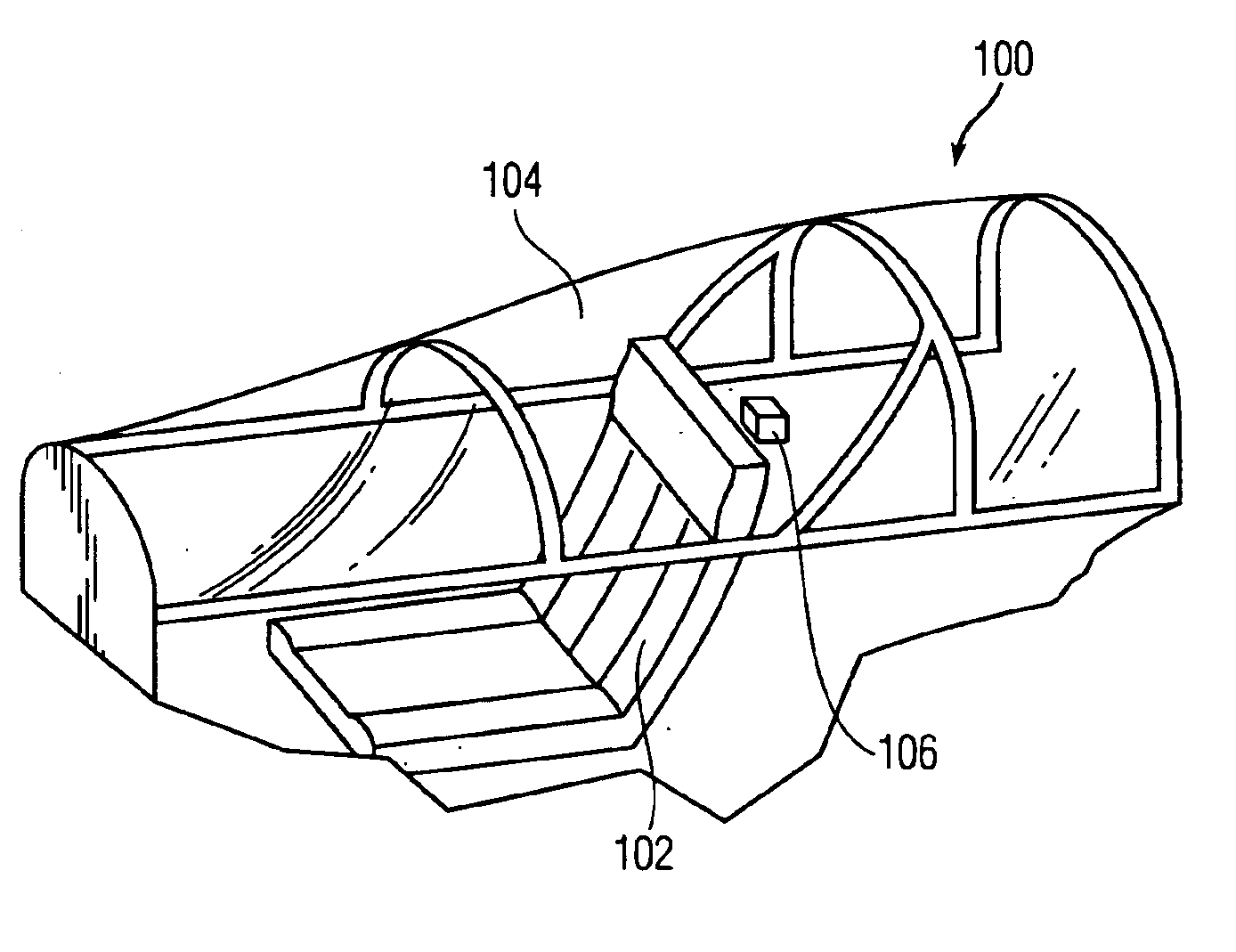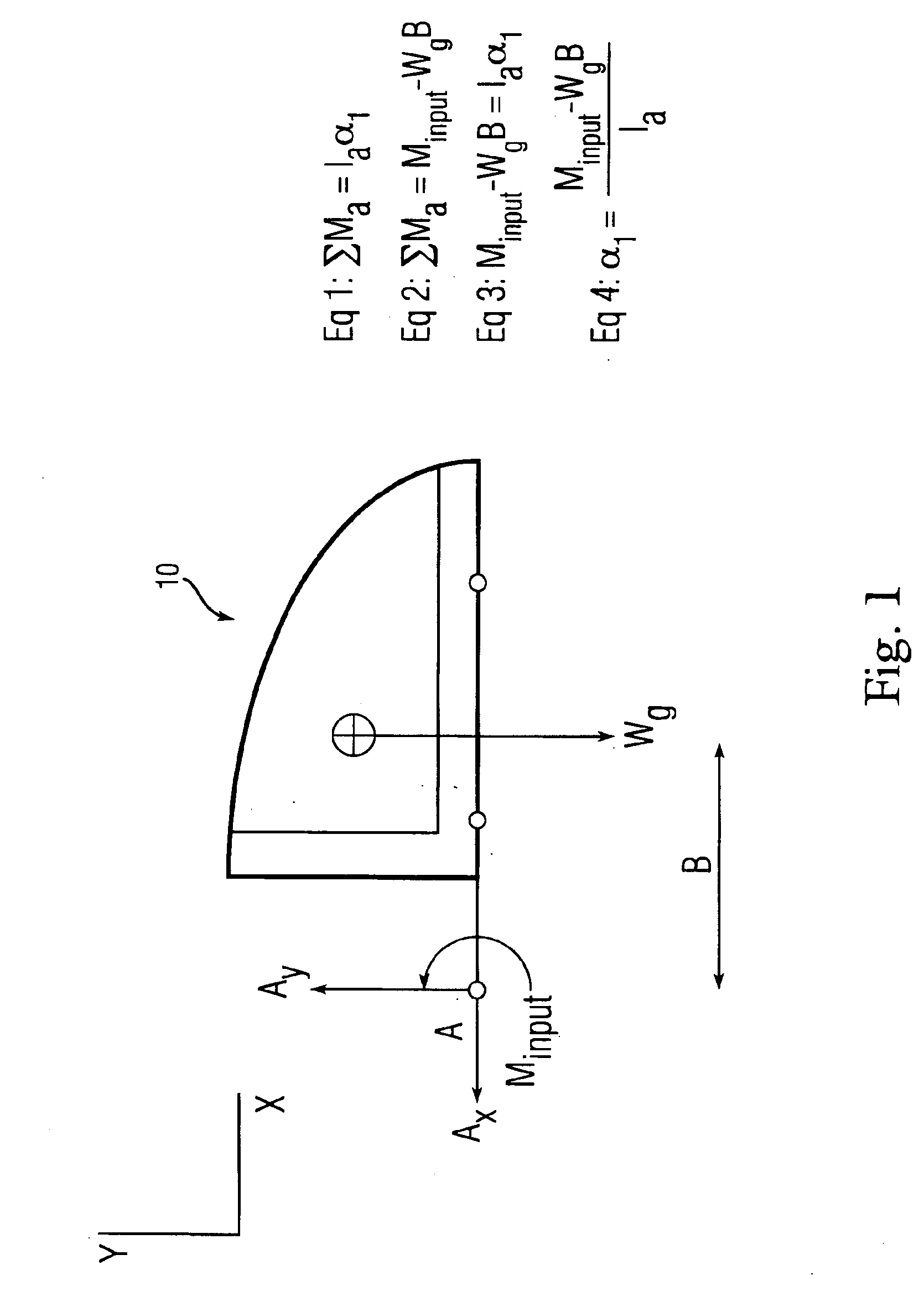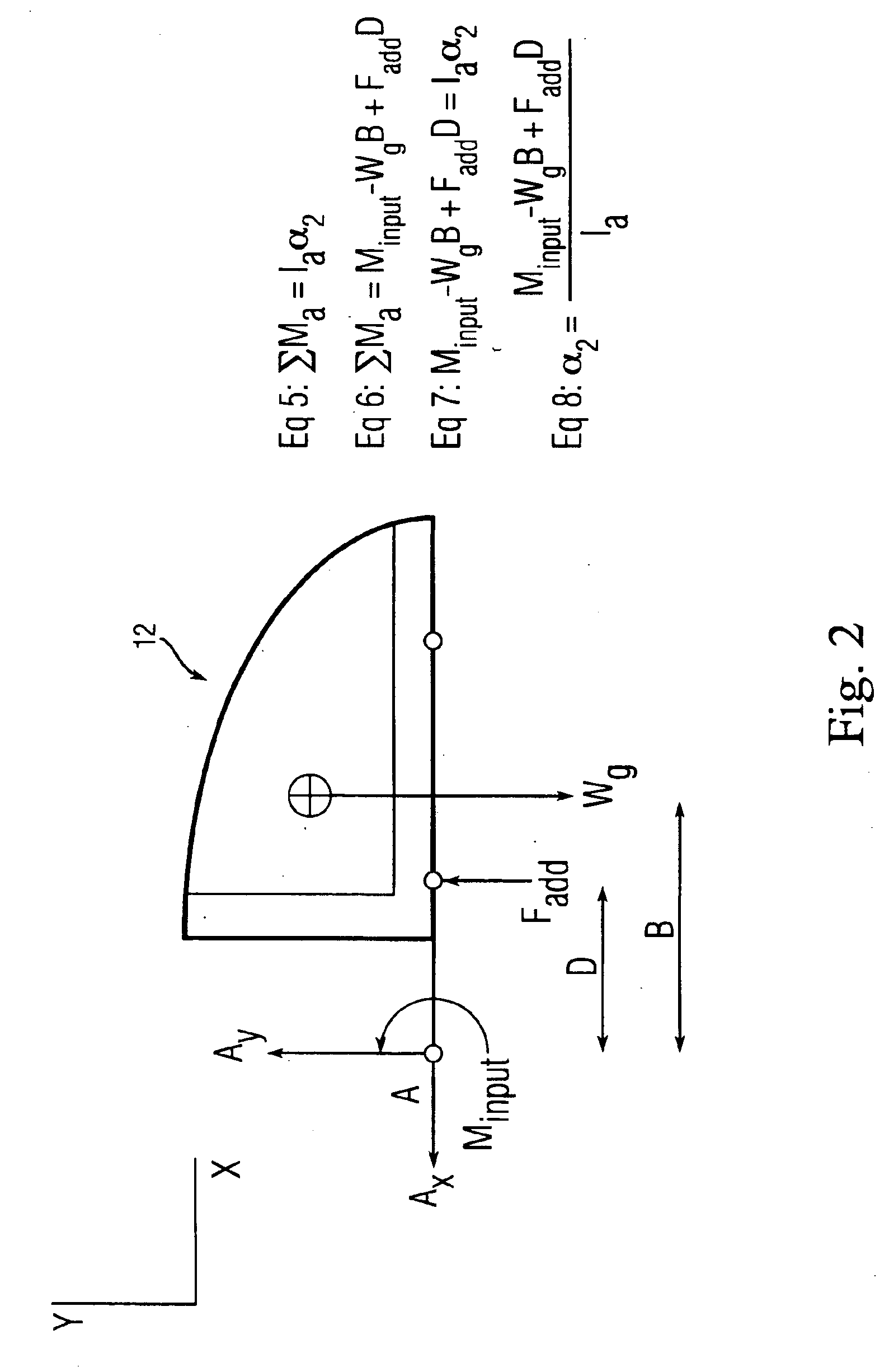Aircraft canopy jettison apparatus with airbag
a technology of airbags and jettison apparatuses, which is applied in the direction of emergency apparatus, aircraft ejection means, seating arrangements, etc., can solve the problems of damage to the hearing of aircrews, delay in the timing of events and possible injury to aircrews, and the limitation of using a canopy thruster
- Summary
- Abstract
- Description
- Claims
- Application Information
AI Technical Summary
Benefits of technology
Problems solved by technology
Method used
Image
Examples
Embodiment Construction
FIG. 1 is a force diagram of a canopy 10 without an airbag and FIG. 2 is a force diagram of a canopy 12 with an airbag. FIGS. 1 and 2 represent the difference between using an airbag (FIG. 2) as an additional force input to an existing canopy jettison system and one without the airbag (FIG. 1). The following analysis assumes that there is no air resistance and at the instant the canopy begins movement that Ax=0 and the angular velocity (w)=0. Equations 1 and 5 in FIGS. 1 and 2, respectively, are the equations for angular motion about a fixed point. Equations 1-4 relate to FIG. 1 and equations 5-8 relate to FIG. 2. The equations 1-8 are shown on the Figs. for clarity. The variables of the equations are:A: the axis of rotation point for the canopy.Ax: the reaction force in the positive x-direction. Units are (lbf) or (N)Ay: the reaction force in the positive y-direction. Units are (lbf) or (N)Minput: the initial momentum that is given to the canopy from a pre-existing canopy jettison ...
PUM
 Login to View More
Login to View More Abstract
Description
Claims
Application Information
 Login to View More
Login to View More - R&D
- Intellectual Property
- Life Sciences
- Materials
- Tech Scout
- Unparalleled Data Quality
- Higher Quality Content
- 60% Fewer Hallucinations
Browse by: Latest US Patents, China's latest patents, Technical Efficacy Thesaurus, Application Domain, Technology Topic, Popular Technical Reports.
© 2025 PatSnap. All rights reserved.Legal|Privacy policy|Modern Slavery Act Transparency Statement|Sitemap|About US| Contact US: help@patsnap.com



